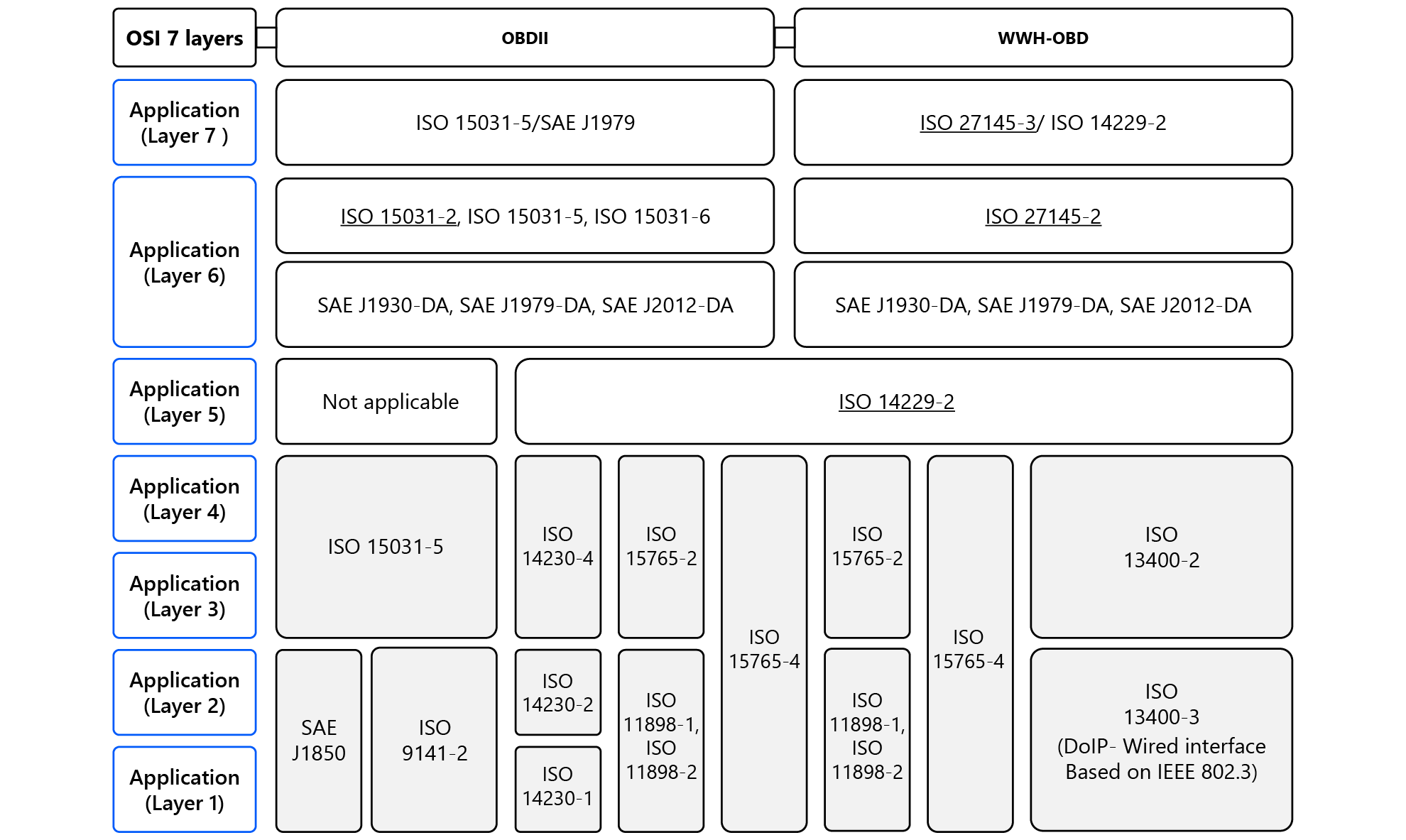The Evolution from OBD II to WWH-OBD
In the realm of vehicle diagnostics, On-Board Diagnostics (OBD) has held a pivotal position since the early 1980s. The OBD II system, which became prominent around 1996, introduced additional services, Parameter Identifiers (PIDs), and Diagnostic Trouble Codes (DTCs).
However, due to the rapid technological advancements and increasing requirements of the automotive industry, engineers started to question if OBD II would be sufficient to serve the demands of modern vehicles' onboard diagnostics.
Harmonization and Standardization: The Need for WWH-OBD
Noticing the growing need for a more sophisticated system, organizations like ISO and SAE pushed for standardization in automotive components, including onboard diagnostics. This wave of standardization witnessed the advent of AUTOSAR and Unification of Diagnostic Services (UDS), establishing the harmonization of the OBD as the next logical step.
What is WWH-OBD? The Future of Vehicle Diagnostics
The World Wide Harmonized On-Board Diagnostics (WWH-OBD) was conceived as an answer to this growing necessity for harmonization.
Commissioned by the United Nations, the ISO is currently defining the WWH OBD standard. Intended to replace regional vehicle diagnostics standards like OBD II, the primary focus of WWH-OBD is on emission-relevant vehicle diagnostics for commercial vehicles, with an intention to include passenger vehicles in the future. (Source).
The Mechanism: OSI Model and WWH-OBD
Based on the 7-layered OSI model, world wide harmonized OBD standardizes communication capabilities between a vehicle's OBD system and external test equipment. Additional protocols used in WWH-OBD include Diagnostics over CAN (DoCAN) and Diagnostics over Internet Protocol (DoIP), providing a more exhaustive scope of diagnostic data compared to OBD II.

Fault Detection and Data Accessibility with WWH-OBD
Compared to the 1-byte long PIDs of OBD II, the WWH-OBD PIDs can be up to 3 bytes long, providing access to a broader range of data types. Moreover, the UDS under WWH-OBD translates the 2-byte DTC of OBD II into a 3-byte DTC. The third byte indicates the failure mode, similar to the failure mode indication (FMI) in protocols like SAE J1939.
The Transition from Existing Communication Standards to WWH-OBD
The ISO 27145-4 or WWH-OBD connection, which operates between the vehicle and test equipment, signifies a shift from existing communication standards to a future global standard.
This connection is based on two separate data connections: Diagnostics communication over Controller Area Network (DoCAN, ISO 15765-4), and Diagnostics communication over Internet Protocol (DoIP, ISO 13400).
The Technical Underpinning of WWH-OBD
Delving deeper into the mechanics of WWH-OBD, it's significant to note the use of the ISO 27145 standard in its implementation. The ISO 27145 standard was specifically designed to facilitate the establishment of WWH-OBD.
When it comes to the OSI model-based architecture of WWH-OBD, it prominently features the Unified Diagnostic Services (UDS) at the application and session layers, and Diagnostics over Internet Protocol (DoIP) at the transport and network layers.
WWH-OBD and Vehicle Communication Capabilities
WWH-OBD offers enhanced communication capabilities by combining UDS services within the OBD-II system. This amalgamation brings in an extensive range of information, including data from various vehicle types such as commercial vehicles and road vehicles.
WWH-OBD thus steps up the onboard diagnostic capabilities, effectively monitoring emission output and enhancing overall engine performance.
In-Depth Fault Analysis with WWH-OBD
WWH-OBD provides more than just an indication of a fault occurrence. It also delivers further information regarding the fault, such as its severity, class, and status. The severity of the fault can guide the vehicle owner or mechanic about the urgency to address the fault.
The class of the fault provides insight into which Global Technical Regulations (GTR) category the fault belongs to, while the status provides real-time updates on whether the issue is pending, validated, or if the test for the fault has been completed during the current driving cycle.
Harmonization Impact on Commercial and Passenger Vehicles
The aim to establish WWH-OBD as the main communication standard for accessing vehicle onboard diagnostics will undoubtedly transform the automotive industry. It will ensure seamless integration and functionality across multiple vehicle models and types, including commercial vehicles and passenger vehicles.
This homogenization will ensure universal access to in-depth diagnostic information, making it easier to manage and troubleshoot vehicles on a global scale.
WWH-OBD: A Forerunner of Standardization and Harmonization
The evolution from OBD II to WWH-OBD signifies the pursuit of standardization and harmonization in the automotive industry. The introduction of WWH-OBD ushers in a future where OBD regulations are unified across countries, creating a globally defined communication standard.
As we continue to move towards this future, WWH-OBD's capabilities will continue to expand, making it an essential tool for onboard vehicle diagnostics.


![A Simple Guide to Automotive Software [2024]](https://d1ihv1nrlgx8nr.cloudfront.net/media/blog/Automotive_Software_What_is_it_and_its_Benefits.jpeg)

